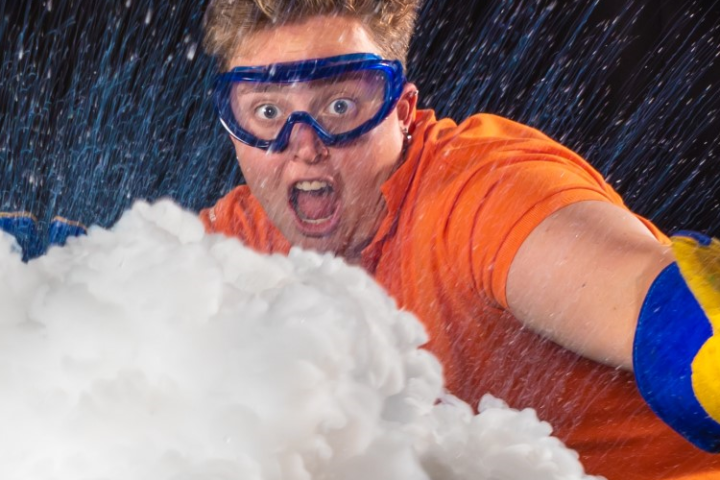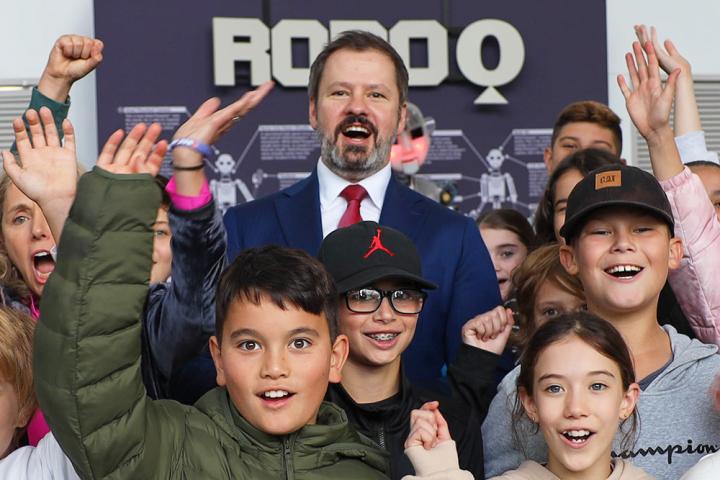Questacon recently gave students the opportunity to take part in Mission Astronautica, a two-month student research project that explored how astronauts train for space. The project was run in partnership with Raytheon Australia and NASA’s Neutral Buoyancy Laboratory (NBL) in Houston, Texas—one of NASA’s premier facilities for training astronauts.
Mission Astronautica was launched at Questacon via a videoconference that gave eight schools from five states around Australia a chance to chat with former NASA astronaut, Clay Anderson. Mr Anderson highlighted how astronauts are trained at the Raytheon-operated NBL which features an enormous pool filled with mock-ups of various areas of the international space station.
Astronauts are immersed in this pool in specially weighted suits that make them neutrally buoyant (neither floating nor sinking) and use the mock-ups to practice moving around and completing tasks as they would in space.
This is the closest simulation they can get to the weightless feeling of being in space, while still remaining on the Earth.
At the launch, Mr Anderson gave students a mission briefing, challenging the students to build their own neutrally buoyant objects from simple materials.
During the two month period, students worked with Questacon via regular videoconference link-ups to develop their ideas. Each school participated in three progress sessions, the first two sessions focused on the practical side of innovation and building mechanisms while the third focused on presentation skills. Engineers from the NBL and Raytheon also provided students with advice along the way.
Each school was unique in the approach they used to create a neutrally buoyant object. Students often reflected their community interests as well as utilising unique resources. Orbost Secondary College (Victoria) incorporated the challenge into their design work using a 3D printer, while Exmouth District High School (Western Australia) considered the popularity of scuba diving in their area to demonstrate other applications of neutral buoyancy.
For the finale event, student representatives from each school presented their success to NBL engineers and Mr Anderson. The presentations focussed on the school’s innovation story—the challenges they faced, how they overcame those challenges, and what they learnt along the way. Students found the challenge much harder than they initially thought but enjoyed the process of building, testing and refining their ideas.
Notable results included:
- A docking mechanism using magnets that allowed two neutrally buoyant objects to dock to each other. They achieved lateral movement of their object by moving magnets on the outside of the water tank.
- Attempted vertical movement via a chemical reaction using Alka Seltzer tablets to form gas and increase buoyancy.
- One group demonstrated excellent lateral thinking by attempting to create a neutrally buoyant object that stayed neutrally buoyant when flipped on its side and/or upside-down by making the object symmetrical. This was not an easy task as it is difficult to adjust weight/buoyancy without affecting symmetry.
Each school involved was successful in creating a neutrally buoyant object, yet no two objects were the same. Students and teachers thoroughly enjoyed the challenge. One teacher said, “The group that participated was our year 8 Honours class. These are the boys that have been identified as 'thinking differently' about their studies. This activity was very good for them.”
The finale concluded with a video recording of an international Rube Goldberg machine which began at the Questacon Technology Learning Centre, Deakin and, with the help of a vibrating mobile phone, concluded at the NBL in Houston. The Rube Goldberg machine was a collaborative effort which summed up the partnership between Questacon, Raytheon Australia and NASA’s NBL which made the Mission Astronautica project a huge success and a valuable learning experience for Australian students.



